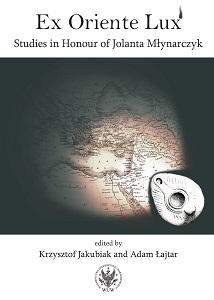TROIS MONNAIES « ISIAQUES » DE KÔM EL-DIKKA À ALEXANDRIE (SAISONS DE FOUILLES 1963–2006)
TROIS MONNAIES « ISIAQUES » DE KÔM EL-DIKKA À ALEXANDRIE (SAISONS DE FOUILLES 1963–2006)
Author(s): Barbara Lichocka
Subject(s): Archaeology
Published by: Wydawnictwa Uniwersytetu Warszawskiego
Keywords: Alexandria; Antioch; Nicomedia; Nilus; Serapis; Maximinus Daia; Theodosius I; coins
Summary/Abstract: Among coins registered during archaeological exploration of Kom el Dikka in Alexandria, seasons 1963–2006, there are three specimens representing a bust of Serapis, Deo sancto Sarapidi on the obverse and a reclining figure of Nilus, Deo sancto Nilo, with the mintmark of Alexandria, on the reverse. The series, labelled as semi-autonomous or civic anonymous coinage, is attributed to the fourth century AD, but precise dating is still a subject for debate. Recently, J. van Heesch, M.-Chr. Marcellesi and E.A. Arslan studied this issue offering various dating: 312, the period between 306–317, and 364–395, respectively. Also, the Antioch and Nicomedia mints produced, at that time, series showing, on the obverses, busts of gods rather than those of an emperor and figural representations of various gods on the reverses. The choice of subjects may be interpreted as a manifestation of an old pagan tradition or an expression of the propaganda against the growing power of Christian religion. Depictions of Serapis and Nilus on the Alexandrian series attest to a mindful choice of deities whose worship in fourth century Egypt was still of great importance. Traces of scratching and twisting on one of the coins may signify that the message of the depictions had not always been approved of.
Book: Ex Oriente Lux. Studies in Honour of Jolanta Młynarczyk
- Page Range: 35-44
- Page Count: 10
- Publication Year: 2020
- Language: English, French
- Content File-PDF

